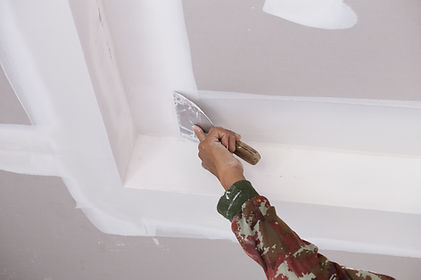.jpg)
Estimate/Consultation
An estimator will come out to the property to review plans, pictures, specifications, and ideas for a formal proposal/home improvement contract. The estimater will assist with design ideas and products.

PHASE 0

PHASE 1
Preparation
A technician will isolate the work area with plastic wall barriers, zipper doors for dust control, and lay a path of travel from the work area to the exit of the building.
Demolition
As a courtesy to our clients and technicians a HEPA filter system is set up to assist with dust/mold control while demolition is in process.

PHASE 2

PHASE 3
Framing
Removing/adding walls can maximize your existing layout and create a unique living space.
Rough Plumbing
Water supply lines and drain pipes are run through bored holes in the studs and other framing members. All pipe connections have been made but no sink faucets or other finished fixtures are installed in this phase.

PHASE 4

PHASE 5
Hot Mop
Hot Mop is a process of water proofing with hot tar and roofing paper. This application can be used in many projects. We specialize in hot mop showers and roman tubs.
Rough Electrical
Electrical cables have been pulled through studs and other framing members and are inserted into wall and ceiling junction boxes. Light switches, light fixtures, outlets, and other devices are not attached.

PHASE 6

PHASE 7
Fiberglass Insulation
Fiberglass stops conductive heat transfer - which is the transfer of heat through solid walls of your home. It is designed to keep your house warm and could be used as a noise barrier.
Drywall
Drywall is a material used to create walls and ceilings. It is also knowns as gypsum board. There are different types of wall textures to consider. Wall textures are commonly used to finish interior wall surfaces and hide taped drywall seams along with other imperfections. It is a great alternative to a smooth finish because it is subtle but easily hides wall and ceiling imperfections. Orange peal, knockdown, and hand trowel texture are most commonly used.

PHASE 8

PHASE 9
Painting
A primer or undercoat is a preparatory coating put on materials before painting. Priming ensures better adhesion of paint to the surface, increases paint durability, and provides additional protection for the material being painted. Interior Paint is made to be scrubbed, resist staining, and allow cleaning. Exterior paints are made to combat against fading and mildew. When choosing a paint sheen, its important to consider the area you are painting. The sheen is the glossiness of a paint finish. Types of sheens include Flat, Matte, Eggshell Enamel, Satin Enamel, Semi-Gloss Enamel and Hi-Gloss Enamel.
Cabinets
There are three basic types of cabinetry: stock, semi-custom and custom cabinets. Each type provides different advantages depending on your needs and budget.

PHASE 10

PHASE 11
Countertops
Granite, quartz (engeniered stone), marble, and laminate are just a few of the counter top materials that are out there.
Tile Underlanyment
HardieBacker cement board is a tile underlayment made for wet areas like kitchens and bathrooms. Wallfloat is another type of underlayment for tile designed for vertical and overhead applications over tile lath.


PHASE 12
Tile & Grout
Ceramic tile is one of the most common tile found in the home because it is suitable for many application. Porcelain, glass, cement, marble, mosaic, granite, limestone are a few other tiles you will find in a home.
PHASE 13
Shower glass doors
The types of shower glass door you choose from depend on design. There are bypass/sliding doors or pivit/hindged doors.

PHASE 14

PHASE 15
Finish
The final stage, finish, consists of the electrical fixtures, plumbing fixtures, and any touch up paint and we are not finished until the client is satitsfied.
Clean up
Each project is cleaned daily. In addition there is a one final clean after the project is completed.
